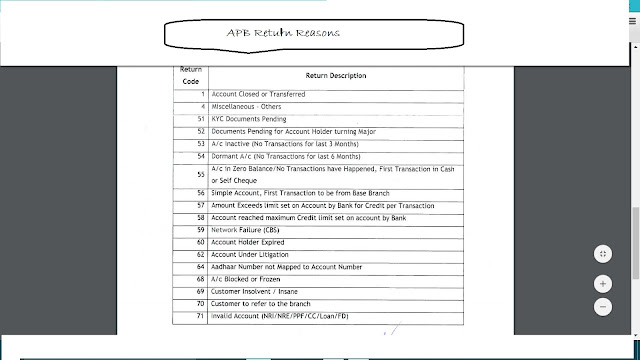Indian e₹ (Digital Rupee) - Models (Direct, Indirect or Hybrid)
Reserve Bank of
India, in the Concept paper on Issuance of Concept Note on Central Bank Digital
Currency, released to the public on Oct 07, 2022
The concept
paper can be read @ https://rbidocs.rbi.org.in/rdocs/PublicationReport/Pdfs/CONCEPTNOTEACB531172E0B4DFC9A6E506C2C24FFB6.PDF
(ii) Models for issuance and
management of CBDCs (Direct, Indirect or Hybrid model),
Highlight A) Direct –
Direct claim on the Central Bank
Highlight B) Indirect
- Indirect claim on the Central Bank via intermediaries
Highlight C) Hybrid –
Hybrid claim on the Central Bank, but with a backup infrastructure
There are three models for the issuance and management of CBDCs across the globe.
The key differences lie in the
structure of legal claims and the record kept by the central bank
A) Single Tier model - This model
is also known as the “Direct CBDC Model”.
A Direct CBDC system would be one
where the central bank is responsible for managing all aspects of the CBDC
system including issuance, account[1]keeping,
transaction verification et. al.
In this model, the central bank
operates the retail ledger and therefore the central bank server is involved in
all payments.
In this model, the CBDC
represents a direct claim on the central bank, which keeps a record of all
balances and updates it with every transaction.
The major disadvantage of this
model is that it marginalizes private sector involvement and hinders innovation
in the payment system.
This model is designed for
disintermediation where the central bank interacts directly with the end customers.
This model has the potential to
disrupt the current financial system and will put an additional burden on the
central banks in terms:
of managing customer onboarding,
KYC, and AML checks, which may prove difficult and costly to the central bank
B) Two-Tier Model (Intermediate
model) The inefficiency associated with the Single tier model demands that
CBDCs are designed as part of a two-tier system, where the central bank and
other service providers, each play their respective role.
There are two models under the
intermediate architecture viz. Indirect model and Hybrid Model.
Indirect Model- In the “indirect
CBDC” model, consumers would hold their CBDC in an account/ wallet with a bank,
or service provider.
The obligation to provide CBDC on
demand would fall on the intermediary rather than the central bank.
The central bank would track only
the wholesale CBDC balances of the intermediaries.
The central bank must ensure that
the wholesale CBDC balances are identical with all the retail balances available
with the retail customers
Suppose the central bank issues e₹
(Digital Rupee) of say 50 crores. These 50 crores will get distributed to a
large pool of individual customers via intermediaries. Say 5 intermediaries.
At the end of each day, the total
e₹ (Digital Rupee) held by 5 intermediaries should be equal to 50 crores.
The internal balances held by each
intermediary may change daily.
The central bank will not have a track of individual e₹ (Digital Rupee) account balances in each intermediary or
the transactions.
The main disadvantage of this
model, is that if any intermediary fails, it will be difficult for the
respective intermediaries' account holders to access their e₹ (Digital Rupee) or
retrieve past transaction details.
Hence, this model is rarely adopted.
This is where the Hybrid Model
holds promise.
Hybrid Model- In the Hybrid
model, a direct claim on the central bank is combined with a private sector
messaging layer.
The central bank will issue CBDC
to other entities which shall make those entities then responsible for all
customer-associated activities.
Under this model, commercial
intermediaries (payment service providers) provide retail services to end
users, but the central bank retains a ledger of retail transactions.
This architecture runs on two
engines:
intermediaries handle retail
payments, but the CBDC is a direct claim on the central bank, which also keeps
a central ledger of all transactions and operates a backup technical infrastructure
allowing it to restart the payment system if intermediaries run into insolvency
or technical outages.
This way, the end customers need not
worry about the stability of the intermediaries. In case of any issue with the intermediary,
RBI may take a decision to shift the e₹ (Digital Rupee) from one intermediary to another intermediary
with minimal disruption.
Plan for India - Indirect System e₹
(Digital Rupee)
Considering the merits of
different models, the Indirect system may be the most suitable architecture for the introduction of CBDC in India.
As per the RBI Act, 1934, the
Reserve Bank has the sole right to issue bank notes, which has now been amended
to include currency in digital form also.
Therefore, in this model, RBI
will create and issue tokens to authorized entities called Token Service
Providers (TSPs) who in turn will distribute these to end-users who take part
in retail transactions.
The rationale behind the same are
as given below:
(i) In the entire supply chain,
there are a wide range of customer-facing activities where the central bank is
unlikely to have a comparative and competitive advantage as compared to banks,
especially in an environment where technology is changing rapidly, which
inter-alia includes distribution of CBDCs to the public, account-keeping services,
customer verification such as KYC and adherence to AML/CFT checks, transaction
verification, etc .
(ii) Banks and other such
entities have the expertise and experience to provide these services.
(iii) These entities can provide
their customers with the ability to transact in and out of CBDC and thus can
enrich the customer experience and may facilitate wider adoption of CBDCs
Disclaimer: These are my personal thoughts only. The bottom
line is Safe ePayments. Nothing More – Nothing Less.
Any errors, belong to me.
Copyrights, if any, belong to the original copyright holder
only.
#stealtime



Comments
Post a Comment